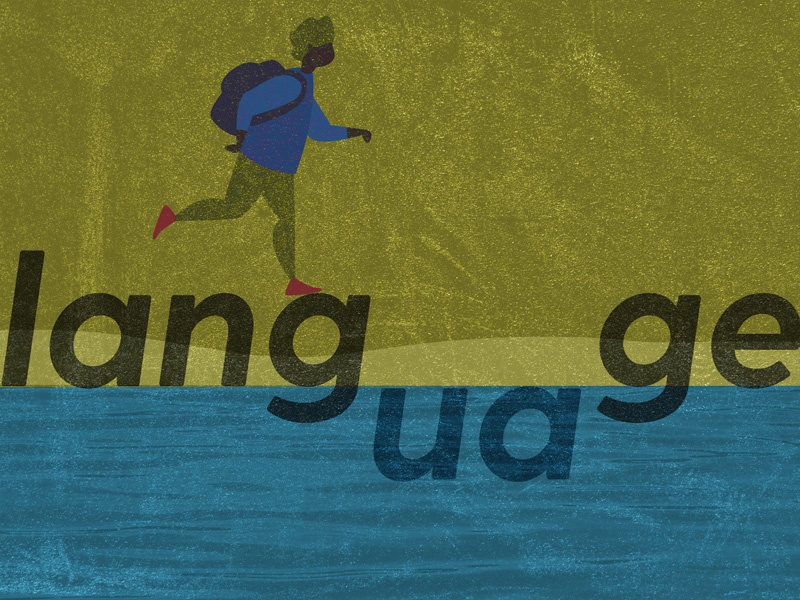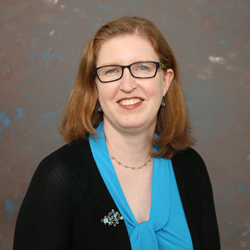


Reading as research
Illustration by Jeffrey C. Chase | Photo by Ashley Barnas February 08, 2021
Study will compare less-intensive treatment methods for developmental language disorder
Developmental language disorder (DLD) is a lifelong language condition that affects about 7% of the population. It is usually diagnosed in childhood, identified by challenges with using complete correct sentence structure, learning new words and using language in social situations. Although DLD is usually diagnosed in childhood, its effects can last a lifetime, spilling into employment, mental health and personal issues.
Treatments for DLD help, but they are time intensive. One solution to help kids get the intensity of service they need is to train parents or teachers to help deliver the intervention, but parent training is often not covered by health insurance or public funds for children older than age 3, even though DLD continues to affect communication and education into adulthood.
Amanda Owen Van Horne, a University of Delaware professor in the Department of Communication Sciences and Speech Disorders in the College of Health Sciences, has been awarded a five-year, $2 million grant from the National Institutes of Health to examine more cost-effective ways to help children with language disorders. Her work aims to compare less-intensive treatment methods that may be more feasible under typical conditions and thus improve long-term outcomes for those with DLD.

Van Horne’s study will measure the effectiveness of training parents and other caregivers to use read aloud books as a way to help children understand syntax and more complicated speech and, in doing so, improve their language. In partnership with the University of Maryland, she plans to enroll 170 children with DLD between the ages of 4 and 7. Parents will receive two hours of training with a speech language pathologist (SLP) as part of the study.
“Two hours’ worth of support sounds like not very much. But it's actually about five times more than what SLPs report that they have contact with parents now,” Van Horne said. “They primarily report that they have five-minute chit chats with parents, as they hand kids back and forth.”
Van Horne hopes her research will lead to a change in the way SLP services are delivered and reimbursed by insurance — either by validating the current intervention as superior or developing an alternative approach.
“The core research question is whether it is really necessary to use some of these complicated techniques,” Van Horne said. “Or can we provide the same input to the kids using something simpler like book reading or repeated reading of sentences so that the kid can still learn the language structures?”
Current strategies for young children up to age 3 involve teaching parents and other adults communication techniques to help support the child. The cost of providing family and caregiver focused therapy is covered from birth to age 3, but as the child gets older, those intensive therapies with speech-language pathologists can be billed to insurance only when SLPs work directly with the child, not their parents, educators or other adults.
“Time spent teaching parents a technique can’t be billed. We can't count time spent supporting a teacher learning a technique,” Van Horne said. “So, when you write an individualized education plan (IEP) and you say, ‘This child gets 100 minutes of service a month, what that most often means is they get 100 minutes of direct contact with the SLP.”
Van Horne will measure any language gains by using computer-based methods, including an eye-tracking tool that will follow where children look when answering questions about what they’ve heard. This kind of work looking at ways to get people to adopt an accepted practice is part of a newer field of research called implementation science, Van Horne said. One example of implementation science is the advancements in car seat technology that made it easier for people to correctly install and use them.
In this case, there’s an opportunity — if the research supports this — to create a way for books to be used as an effective teaching tool for children with DLD requiring minimal training for caregivers.
“On the other hand, if we find that the books aren't any good, the kids don't learn from them, nobody reads them, whatever, then it would suggest that we really need to dig in around changing public policy,” Van Horne said. A big step would be to better fund the work of SLPs beyond the time they spend with the student or to reduce caseload size to allow the SLP more time coaching others.
The results of her study could provide the evidence needed to support current interventions. “Whether they're in schools, or they're working through reimbursement methods, insurance, it needs to be billable, it needs to count. And right now, intense parent training doesn't count,” Van Horne said.
Contact Us
Have a UDaily story idea?
Contact us at ocm@udel.edu
Members of the press
Contact us at 302-831-NEWS or visit the Media Relations website

